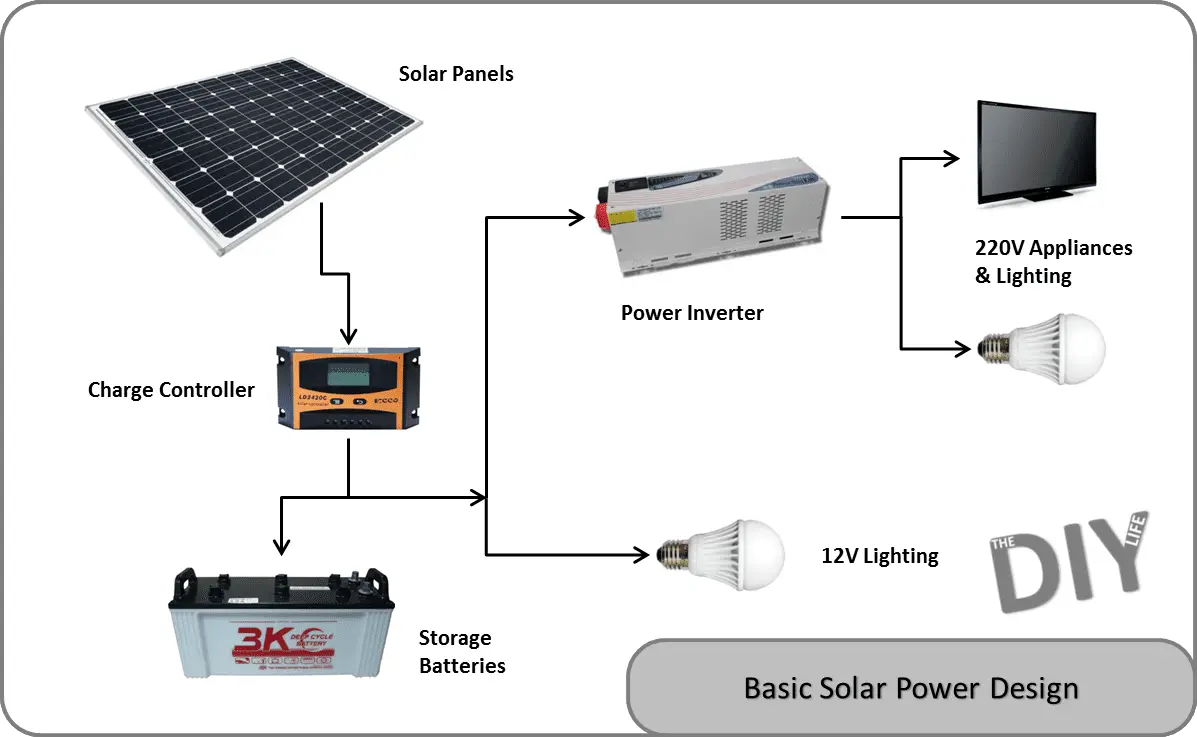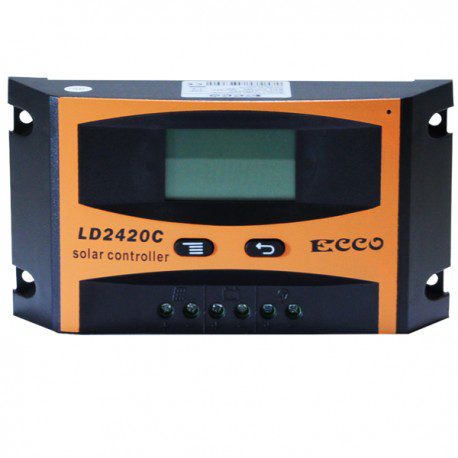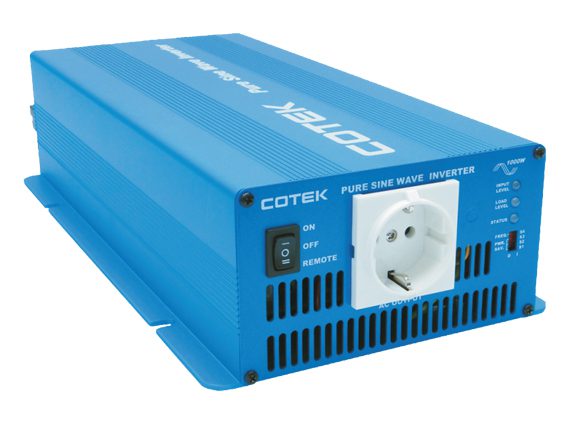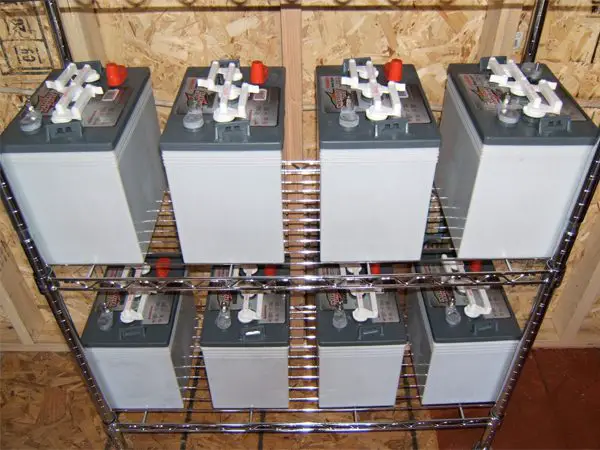Solar technology is developing at an increasing rate, making it easier and more affordable for the average household to switch some or all of the power requirements to solar. Solar panels turn energy from the suns light into electrical energy which, with a bit of technology, we can use to power anything from lights to appliances in our homes for free.
A basic system is setup as in the below graphic:
The first component needed is one or more solar panels. The panels provide electricity with which to charge the storage batteries. A small household system would be made up of a few 100W to 400W panels while a larger household system could have up to ten 200W panels. Click here to buy 250W panels.
A charge controller is needed to convert the power from the panels into the correct voltage to charge the storage batteries. The charge controller also monitors the voltage of the batteries and prevents them from being over charged. A good quality charge controller will increase the life of the batteries. Click here to buy a 30 amp solar charge controller.
A power inverter is the last item required to convert the energy form the sun into energy our household appliances can use. Most houshold appliances run on 110V or 220V alternating current while the batteries supply 12V direct current. The power inverter converts the 12V DC into 110/220V AC which our appliances can use. Some power inverters can also be used to charge the batteries when connected to a 110/220V AC supply when there is no solar power available. Read this article for more information on selecting an inverter for your system. Click here to buy a 3000W pure sine wave inverter.
The storage batteries are used to store the energy which the solar panels have produced. The solar panels only produce full power when they are in full and direct sunlight, which only occurs for a few hours a day. The batteries are charged using this power and they then store the energy for use when we need it. Each battery has a storage capacity in amp hours (Ah) and adding up the capacity of all of the batteries together gives you your total storage capacity. Use the guide provided through this link to assist you in selecting how many batteries you need for your solar power system. Click here to buy a 155Ah solar storage battery.
LED lights are available in 12V options which are designed to run directly from your battery supply. If you are going to be using your solar power system to only power your lighting then you can do away with needing an inverter by using a 12V lighting system in your house.
Once you have selected the main components for your solar power system, use this guide and spreadsheet to check that the components are compatible and adequately sized: Design Check.
In order to further save on your household electricity consumption as well as to reduce consumption to allow a smaller solar array to be installed, have a look at this article on how to reduce your electricity requirements.






When people sign a contract for solar power, one of the first things they want to know is, when can they stop paying for electricity and when will they start generating it. Installation isn t going to happen overnight, but you should have a good idea of when your system will be producing, it can add or subtract from your savings.